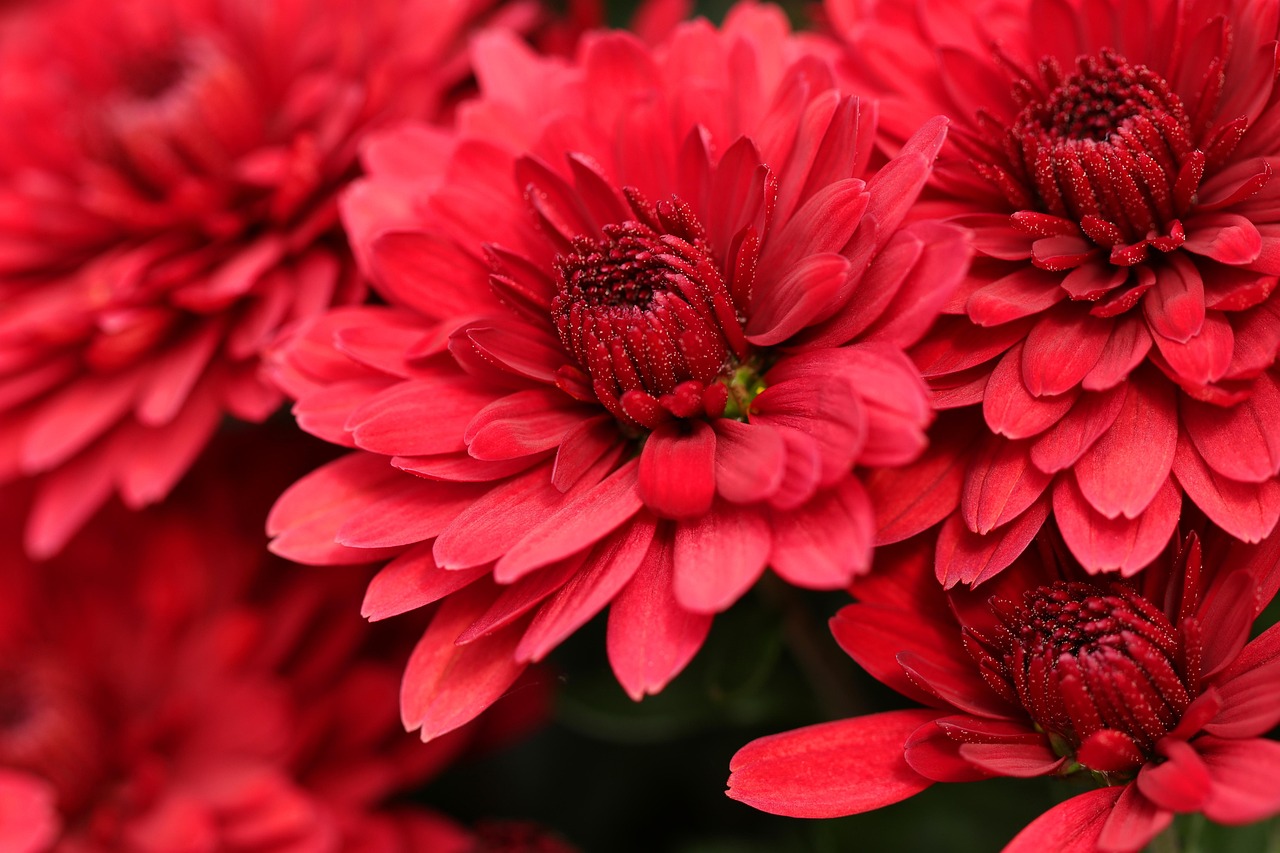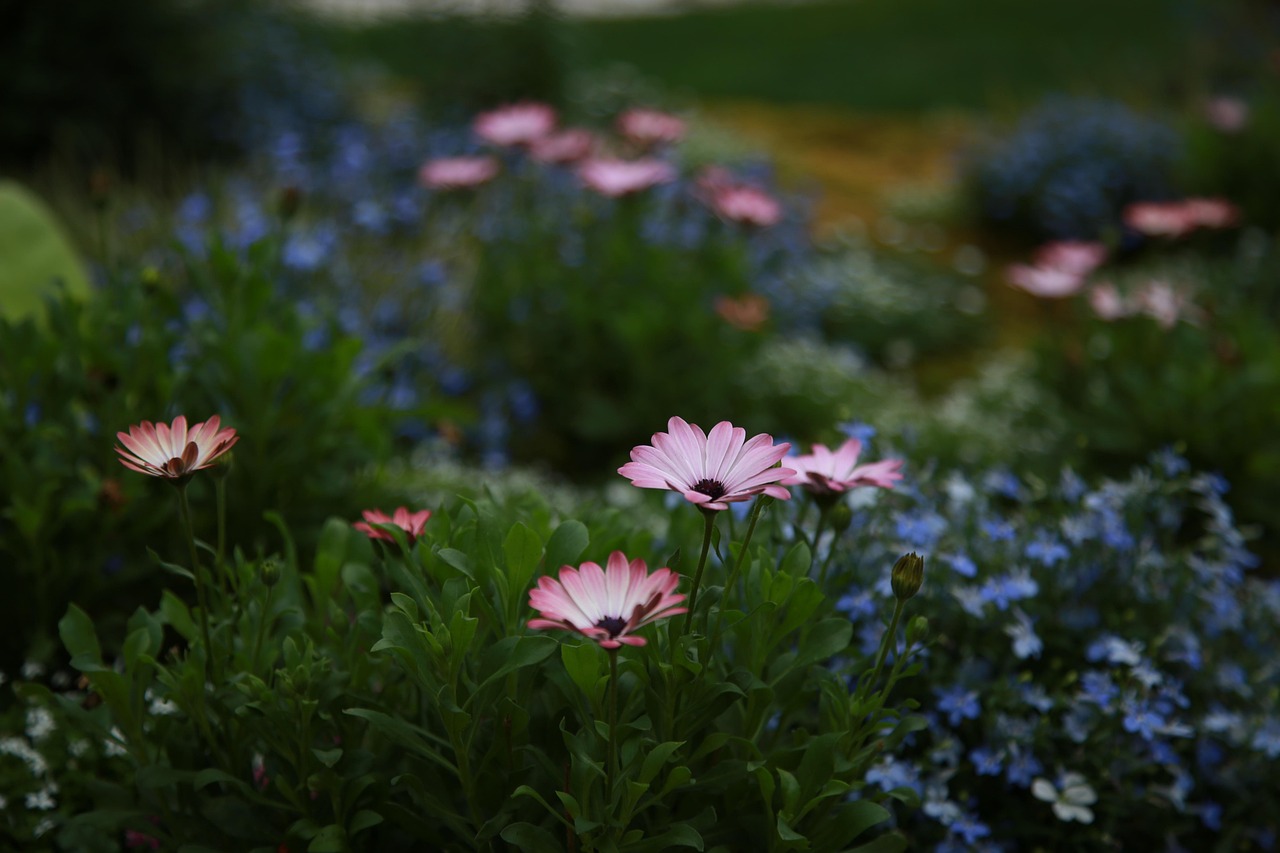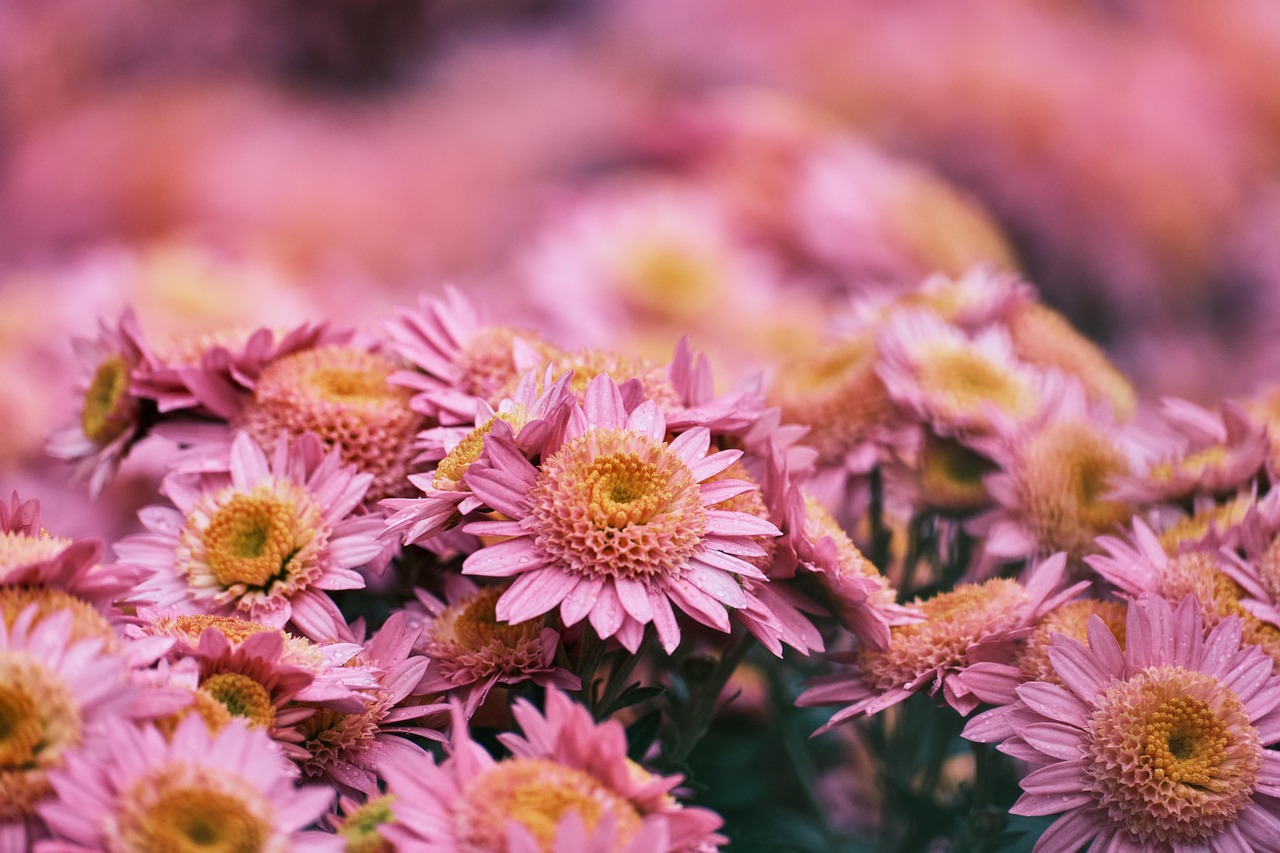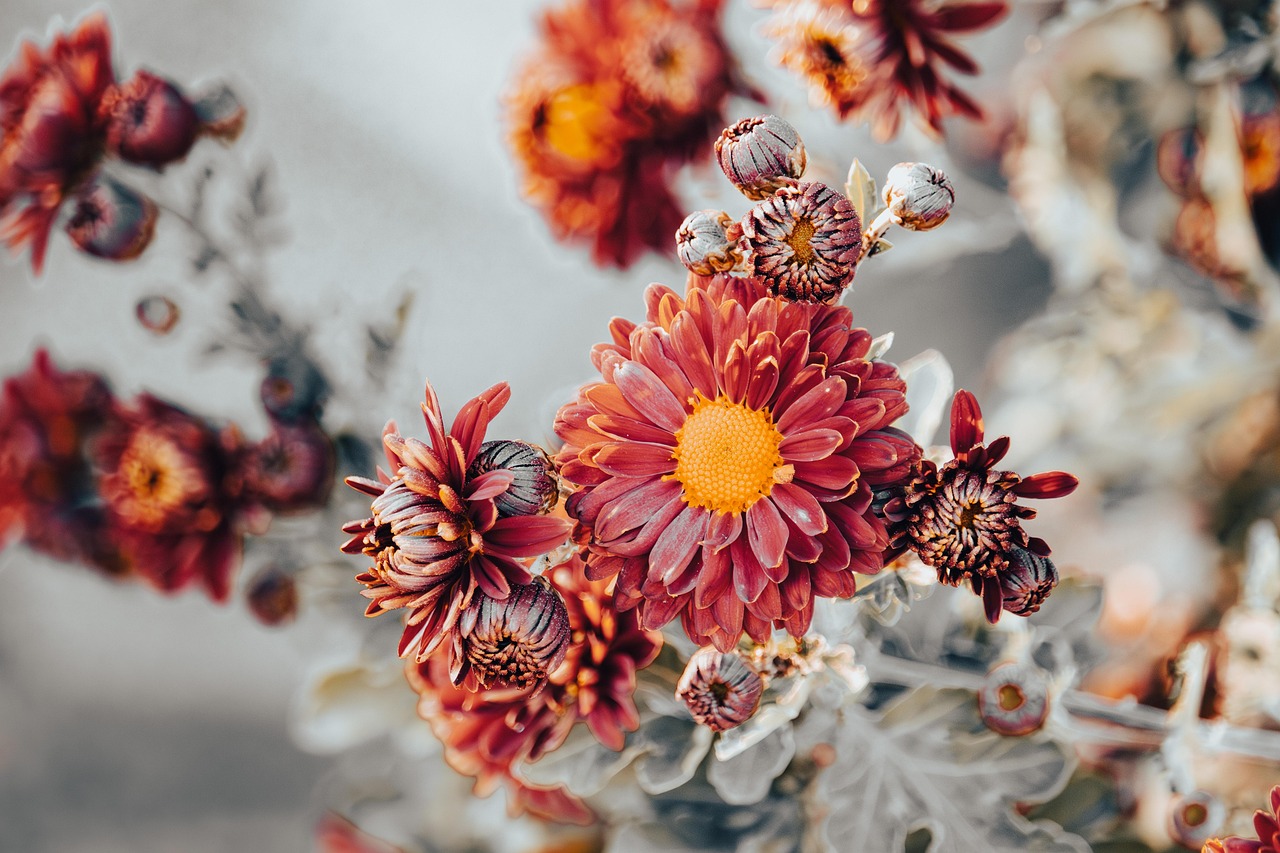Chrysanthemum bloom season typically occurs in the fall, from late September to November. To ensure gorgeous flowers, provide them with well-draining soil, adequate sunlight, and regular watering. Pruning dead blooms and protecting them from frost will also enhance their beauty and longevity.
Chrysanthemums, often referred to as “mums,” are popular flowering plants that bring vibrant colors and textures to gardens and landscapes. These hardy perennials are celebrated for their ability to bloom in the cooler months, making them a favorite choice for fall gardens. With a variety of shapes and colors available, chrysanthemums can complement any garden style, from formal to cottage. Understanding their bloom season and care requirements can help gardeners achieve stunning displays.

The chrysanthemum bloom season can vary based on climate and specific cultivars. Most commonly, these flowers begin to show their colors as the days shorten and temperatures cool. In addition to their beauty, chrysanthemums are known for their resilience. With proper care, they can thrive in various conditions and provide blooms that last several weeks.
Understanding Chrysanthemum Varieties
Before diving into care tips, it is essential to understand the different varieties of chrysanthemums available. Each type may have slightly different needs. Here are some common chrysanthemum varieties:
- Garden Mums: These are the most common types found in gardens. They are available in many colors and shapes.
- Hardy Mums: Known for their ability to withstand colder temperatures, they are ideal for fall planting.
- Spoon Mums: Recognized for their unique petal shape, resembling a spoon.
- Show Mums: Typically larger blooms that are often cultivated for competitions.
Understanding these varieties helps in choosing the right types for your garden and knowing their specific care requirements.

Optimal Growing Conditions
Chrysanthemums thrive best when planted in optimal conditions. Here are some factors to consider:
| Factor | Recommendation |
|---|---|
| Sunlight | At least 6 hours of direct sunlight daily. |
| Soil Type | Well-draining soil rich in organic matter. |
| Watering | Regular watering; keep the soil moist but not soggy. |
| Fertilization | Use a balanced fertilizer every 4-6 weeks during the growing season. |
These conditions will help ensure that your chrysanthemums grow healthy and produce abundant blooms during the season. In addition to these factors, it is crucial to monitor for pests and diseases that may affect plant health. Common pests include aphids and spider mites, which can be managed with appropriate treatments.
Seasonal Care Tips
Caring for chrysanthemums throughout their bloom season requires attention and effort. Here are some essential tips to keep in mind:

- Watering: Maintain consistent moisture levels, especially during dry spells. Water deeply to encourage root growth.
- Deadheading: Removing spent flowers promotes further blooming and keeps plants looking tidy.
- Mulching: Apply mulch around the base of the plants to retain moisture and suppress weeds.
- Winter Preparation: As temperatures drop, protect plants by covering them with mulch or moving potted mums indoors.
By following these care tips throughout the bloom season, gardeners can enjoy healthy plants that add beauty to their outdoor spaces. With proper attention, chrysanthemums will not only thrive but also create a breathtaking display of color and form in the garden.
Common Pests and Diseases
Chrysanthemums can be susceptible to various pests and diseases that may threaten their health. Understanding these issues is vital for effective management. Below are common pests and diseases to watch for, along with prevention and treatment strategies.
Pests
Several pests can infest chrysanthemums, causing damage to the leaves and flowers. Here are some of the most common ones:

- Aphids: These small, soft-bodied insects suck sap from the plants, leading to wilting and stunted growth. They can also transmit viruses.
- Spider Mites: Tiny and difficult to see, spider mites create fine webs on the plants. They thrive in dry conditions and cause leaf discoloration.
- Whiteflies: Similar to aphids, whiteflies feed on plant sap and can weaken the plant. They also produce sticky honeydew, which attracts ants.
- Thrips: These slender insects can cause damage to flower petals, leading to distorted blooms.
Disease
In addition to pests, chrysanthemums can be affected by various diseases. Here are some common diseases and their characteristics:
- Powdery Mildew: This fungal disease appears as a white powdery substance on the leaves. It thrives in humid conditions and can lead to leaf drop.
- Botrytis Blight: Caused by a fungus, this disease results in gray mold on flowers and leaves, especially under cool and damp conditions.
- Root Rot: Overwatering can lead to root rot, a condition that causes yellowing leaves and wilting as roots decay.
Preventive Measures
Preventing pest infestations and diseases is easier than treating them after they occur. Here are some effective preventive measures:
- Good Hygiene: Keep the garden clean by removing dead leaves and debris that can harbor pests and diseases.
- Adequate Spacing: Plant chrysanthemums with enough space between them to ensure good air circulation, which helps prevent fungal diseases.
- Proper Watering: Water at the base of the plant to keep foliage dry and reduce the risk of diseases.
- Use Resistant Varieties: When possible, choose chrysanthemum varieties that are resistant to common pests and diseases.
Fertilization Techniques
Proper fertilization is essential for healthy chrysanthemum growth and vibrant blooms. Here are some techniques for effective fertilization:
- Initial Fertilization: At planting time, mix a slow-release fertilizer into the soil to provide essential nutrients as the plants establish.
- Mid-Season Boost: Apply a balanced fertilizer every four to six weeks during the growing season to support ongoing growth and blooming.
- Organic Options: Consider using organic fertilizers like compost or well-rotted manure. These options improve soil structure while providing nutrients.
A soil test can also be beneficial in determining nutrient levels and pH balance. This information helps in selecting the right fertilizers for optimal growth.
Watering Strategies
Watering is a crucial aspect of chrysanthemum care. Proper watering techniques can greatly affect plant health and flowering potential.
- Deep Watering: Water deeply once or twice a week, depending on rainfall. This encourages deep root growth.
- Morning Watering: Water in the morning to allow foliage to dry throughout the day, reducing disease risks.
- Avoid Overwatering: Ensure pots or garden beds have good drainage to prevent waterlogged soil, which can lead to root rot.
By following these watering strategies, gardeners can help their chrysanthemums remain hydrated without over-saturating the soil. This balance is key for thriving plants that produce beautiful blooms throughout the season.
Pruning Techniques for Beautiful Blooms
Pruning is an essential practice for maintaining the health and appearance of chrysanthemums. Proper pruning encourages vigorous growth and promotes abundant blooming. Here are some key techniques to consider:
When to Prune
Timing is crucial when it comes to pruning chrysanthemums. Here’s a guideline:
- Spring Pruning: In early spring, before new growth begins, cut back any dead or damaged stems to encourage fresh growth.
- Mid-Season Pruning: During the growing season, pinch back the tips of the stems when they reach about 6 inches in height. This practice encourages bushier growth.
- Fall Pruning: After the blooming season, remove any spent flowers and dead foliage to prepare the plants for winter.
How to Prune
Effective pruning involves more than just cutting back stems. Here are steps to follow:
- Use Clean Tools: Always use clean, sharp pruning shears to prevent disease transmission.
- Make Clean Cuts: Cut at an angle just above a leaf node or bud to encourage new growth.
- Avoid Over-Pruning: Be cautious not to remove too much foliage, as this can stress the plant.
By following these pruning techniques, gardeners can ensure their chrysanthemums remain healthy and produce a stunning display of blooms.
Supporting Chrysanthemums as They Grow
As chrysanthemums grow, they may require support, especially taller varieties that can become top-heavy. Here are some methods to provide adequate support:
- Stakes: Insert stakes into the soil near the base of the plant and gently tie stems to them with soft ties. This helps prevent bending and breaking.
- Cages: Using plant cages can offer support for multiple stems and keep them upright as they grow.
- Grouping Plants: Planting chrysanthemums closely together can provide natural support, as they will lean on one another.
Choosing the Right Location
The location where you plant your chrysanthemums significantly impacts their growth and blooming potential. Consider these factors when choosing a location:
- Sun Exposure: Select a spot that receives at least 6 hours of direct sunlight daily. Morning sun is particularly beneficial.
- Soil Type: Ensure the soil is well-draining, rich in organic matter, and has a pH between 6.0 and 7.0.
- Protection from Wind: Choose a sheltered area to protect plants from strong winds that can damage flowers and stems.
By selecting the right location, you set the stage for healthy growth and vibrant blooms throughout the chrysanthemum bloom season.
Companion Planting with Chrysanthemums
Companion planting can enhance the growth of chrysanthemums while also benefiting surrounding plants. Certain plants can deter pests or improve soil quality. Here are some great companions for chrysanthemums:
- Basil: This herb repels aphids and attracts beneficial insects like ladybugs.
- Nasturtiums: These flowers act as a trap crop for aphids, drawing them away from chrysanthemums.
- Marigolds: Known for their pest-repellent properties, marigolds can help protect chrysanthemums from harmful insects.
Companion planting not only provides ecological benefits but also adds beauty and diversity to your garden.
Preparing for the Chrysanthemum Bloom Season
The preparation for the bloom season is crucial if you want your chrysanthemums to thrive. Here are steps you can take in advance:
- Soil Preparation: Before planting, amend the soil with compost or well-rotted manure to enrich nutrient content.
- Selecting Varieties: Choose varieties suited to your climate zone to ensure optimal growth and blooming potential.
- Timing Planting: Plant chrysanthemums in spring after the last frost date for best results, allowing them time to establish before blooming.
By following these preparatory steps, gardeners can create an ideal environment for their chrysanthemums, leading to a stunning display as they bloom in the fall.
Seasonal Challenges and Solutions
While chrysanthemums are generally hardy plants, they can face various challenges throughout their growing season. Understanding these challenges and knowing how to address them is essential for maintaining healthy blooms.
Temperature Fluctuations
Chrysanthemums can be sensitive to sudden temperature changes, especially in spring and fall. Here are some strategies to mitigate temperature-related issues:
- Frost Protection: Use frost cloths or blankets to cover plants during unexpected cold snaps.
- Mulching: Apply a layer of mulch around the base of the plants to help retain soil temperature and moisture.
- Transplanting Timing: Avoid transplanting during extreme temperature fluctuations to reduce stress on the plants.
Watering Issues
Both overwatering and underwatering can impact chrysanthemum health. Here’s how to manage these issues:
- Soil Monitoring: Regularly check soil moisture levels with your finger or a moisture meter before watering.
- Adjust Frequency: Modify your watering schedule based on rainfall and temperature changes to ensure consistent moisture without waterlogging.
- Draining Solutions: If you notice standing water, consider raised beds or improving drainage in your garden.
Harvesting Chrysanthemums for Indoor Displays
Chrysanthemums make beautiful cut flowers that can brighten indoor spaces. To successfully harvest and display them, consider these tips:
- Timing: Harvest flowers when they are just beginning to open for the best longevity in vases.
- Cutting Technique: Use sharp scissors or shears to make a clean cut at an angle, ensuring a longer vase life.
- Watering Before Harvest: Water the plants thoroughly before cutting to ensure that the flowers have plenty of hydration.
Once cut, place the stems immediately in water and keep them in a cool, shaded area until you are ready to arrange them.
Using Chrysanthemums in Landscaping
Chrysanthemums are versatile plants that can enhance various landscaping designs. Here are some creative ways to incorporate them into your outdoor spaces:
- Borders: Use chrysanthemums as border plants along pathways or garden beds for a colorful edge.
- Mixed Containers: Combine chrysanthemums with other seasonal flowers in containers for a vibrant display on patios or porches.
- Flower Beds: Plant chrysanthemums in clusters for a bold impact, mixing different colors and bloom types.
Their adaptability makes them an excellent choice for adding seasonal interest and color to any garden design.
Final Thoughts
Caring for chrysanthemums involves various aspects, from selecting the right varieties and preparing the soil to understanding watering needs and pest management. With their stunning colors and unique forms, chrysanthemums can elevate any garden or landscape. By following proper care techniques, gardeners can enjoy vibrant blooms from late summer through fall, bringing seasonal joy and beauty to their outdoor spaces.
The key takeaways for successful chrysanthemum care include ensuring optimal growing conditions, practicing effective pruning and watering techniques, and being proactive about pest and disease management. With dedication and attention, anyone can cultivate gorgeous chrysanthemums that will delight throughout the bloom season. As you embark on your chrysanthemum gardening journey, remember that patience and learning from experience will lead to the most rewarding blooms.
